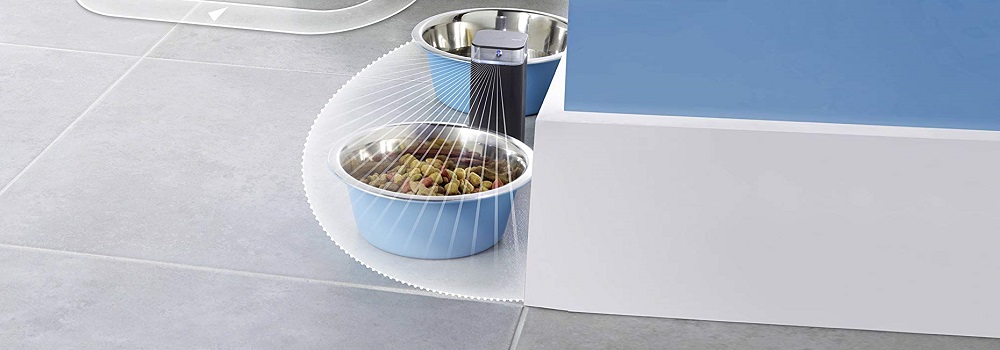In this article, we’re going to be looking at “virtual wall barriers” and “boundaries”. These are tools and accessories that are often bundled with the new robot vacuums on today’s market. They are very popular and very useful. We’re going to be exploring why, exactly, they’re so popular. We’re also going to be looking at how to use them, how they work, and why you should get a robot vacuum with these features!

Let’s Talk About Sensors…
Every robot vacuum comes equipped with a wide variety of sensors. There’s no getting around this. Robot vacuums are devices that require these sensors for almost all of their functions.
When a robot vacuum is cleaning, it uses the sensors it has to do many things. Such as checking if there are any obstacles in its path, and then avoiding those obstacles. As well as mapping out the specifics of a certain space. Among many other uses, such as detecting larger patches of dirt and creating patterns of movement that enable the robot vacuum to clean efficiently and effectively.
Robot Vacuum | Recommended
Last update on 2024-04-24 / Affiliate links / Images from Amazon Product Advertising API
More and more robot vacuums are becoming equipped with powerful sensors that can map out the entirety of not only a space/room, but an entire floor of your house! This has led to the development of applications for smartphones that enable you to select a room and to have that room, and that room only, cleaned.
Sometimes, these features are quite deep and multifaceted. With certain advancements, you are now able to tell your robot vacuum to clean a specific area of a room. This is very convenient if certain spots are especially dirty.
However, robot vacuums with this level of sensor complexity are somewhat expensive. Most people are unwilling to shell out the cash for robot vacuums with this technology. That is why virtual wall barriers and strip boundaries have such a presence in the robot vacuum market.
Which leads to our next section…

So, How Does A Virtual Wall Barrier/Boundary Work?
Most virtual wall barriers are rectangular and quite small. You can set them anywhere, even in tight spaces, due to their small size.
Using infrared technology, these virtual wall barriers send out a kind of “beam”. This is an infrared beam that you and I can’t see, but the robot vacuum can. When the robot vacuum detects this beam, it changes directions and moves back. This is because it has been programmed to react this way, upon registering the beam.
Boundary strips are a little different, but, essentially, they work the same way. They are longer and when you lay them out, they form a physical barrier. However, using magnetic technology, they send out a signal, just like the virtual wall barrier, that tells the robot vacuum to not go over that particular boundary strip.

What Exactly Do Virtual Wall Barriers And Boundaries Do?
If you have a specific room or space that needs to be cleaned, you can use these two accessories to make that process very easy. Most robot vacuums don’t give you the option to clean a specific room. This is due to the sensors, which, oftentimes, aren’t complex enough to fully map out the entirety of your home.
With a virtual wall barrier or boundary strip, those sensors aren’t needed. Instead, you place the physical device around the space that you want to be cleaned, and then the robot vacuum has no choice but to clean that entire space thoroughly until you are happy with the results.
For example, if you want your bedroom vacuumed, and only your vacuum, you can place a boundary strip by the bedroom entrance. Then, just place the robot vacuum in your room, past the boundary strip.

Once you’ve done that, turn it on and let it run for the entirety of its battery life. This is assuming that you want very thorough cleaning. Since there’s that boundary strip, it has no choice but to remain in that room, cleaning and cleaning.
You can do the same with a virtual wall barrier. And if you purchase a more expensive robot vacuum, you will have the option to use a virtual map that enables you to choose specific areas to clean. While these features aren’t as advanced as their more expensive counterparts, they work the same way, giving you a tremendous amount of convenience.
Since convenience is one of the main functions of a robotic vacuum, these are very nice features that will aid you tremendously!

Wrap-up
Well, that’s it for this Virtual Wall Barriers Info Guide. We hope you found it helpful!
If you’re still having trouble deciding the Robot Vacuum that’s best for you see our full guide on robot vacuums here.
Our Recommended Robot Vacuums
Last update on 2024-04-26 / Affiliate links / Images from Amazon Product Advertising API





